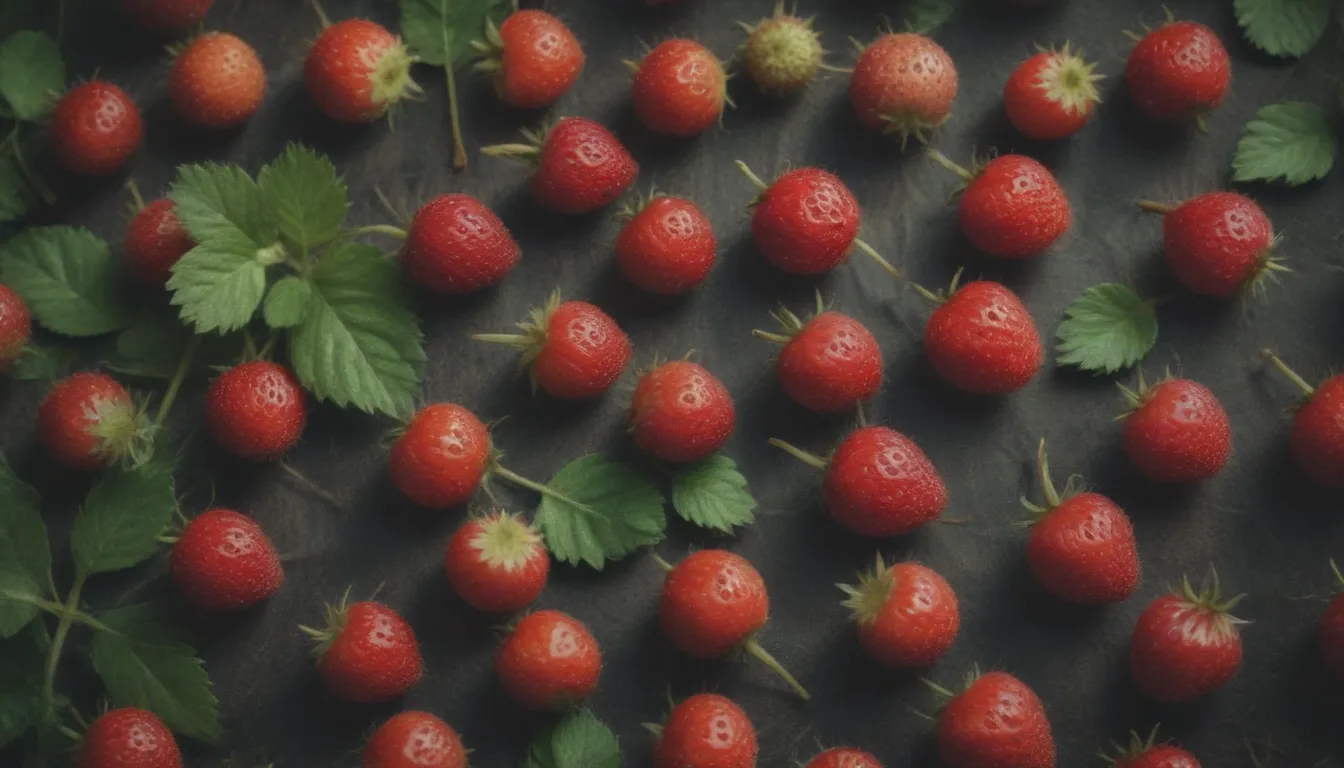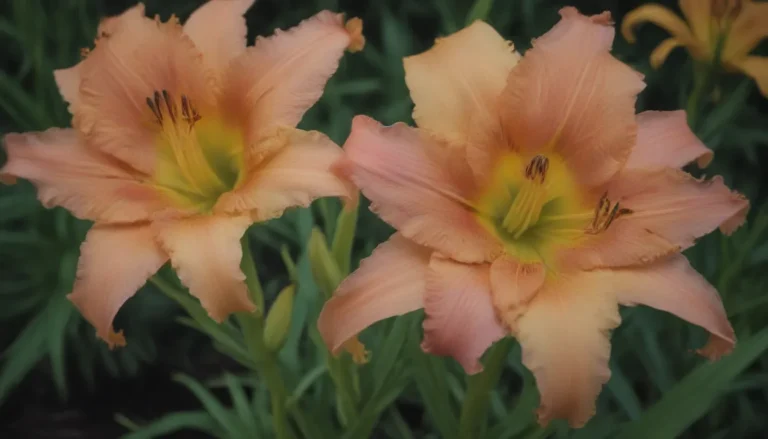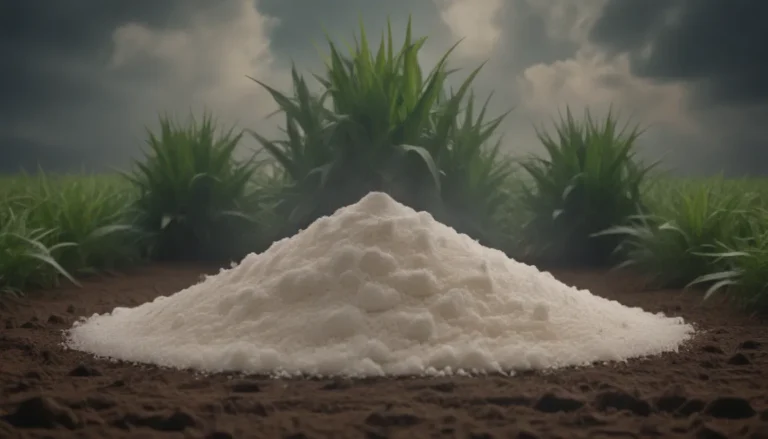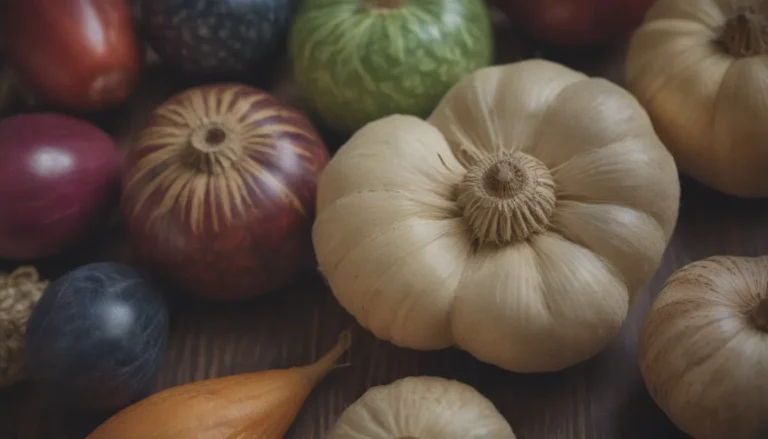The Ultimate Guide to Growing and Caring for Wild Strawberries

Have you ever wondered about the origins of the strawberries we enjoy today? Look no further than the wild strawberry, Fragaria virginiana. This native ground hugger is a parent plant to over 250 different types of strawberries available to growers and consumers today. In this comprehensive guide, we will explore everything you need to know about growing and caring for wild strawberries.
About Wild Strawberries
The wild strawberry plant is visually similar to cultivated plants, with three leaves and white, five-petaled flowers on drooping stems that emerge from the crown. This everbearing type spreads in open, sunny areas by stolons and rhizomes. Active growth occurs in spring and autumn, with periods of dormancy in summer and winter. Blooms appear in spring followed by berries in early summer. Autumn foliage turns attractive shades of red. These berries are smaller than cultivated varieties but are edible, fragrant, and very sweet, serving as a food source for wildlife.
How to Plant Wild Strawberries
Wild strawberries are planted in the same way as other strawberry cultivars. They can be grown in pots, planters, and hanging baskets, but they work best as a ground cover in areas with afternoon shade. Here’s a step-by-step guide on how to plant wild strawberries:
- Obtain Plants: Wild strawberry plants are easiest to find at nurseries specializing in native plants. If you have bareroot plants, plant them as soon as possible to prevent the roots from drying out.
- Prepare the Soil: Dig a wide, shallow hole and build a small mound of soil in the center. Set the crown on the mound, spread out roots around it, and cover them with soil, keeping the top of the crown at or slightly above soil level.
- Watering: Water gently but thoroughly after planting to help establish the plant.
- Transplants: Plant transplants at the same level as they were in the original pot.
When to Plant Wild Strawberries
Plant wild strawberries in late spring or from late summer to early autumn. It’s best to wait until the danger of frost has passed in spring when temperatures are still cool. In autumn, allow enough time for roots to establish before the first frost.
Selecting a Planting Site
Choose a spot that receives 4 to 6 hours of sunlight daily. While these plants benefit from afternoon shade, adequate sunlight improves fruit production and flavor. Wild strawberries thrive in loamy, slightly acidic, well-draining soil.
Spacing, Depth, and Support
Plant wild strawberries 12 inches apart, ensuring the crown is just at or slightly above soil level. Consider using a natural mulch like straw to improve moisture retention and keep fruits off the ground.
Wild Strawberry Plant Care
Once established, wild strawberries are low-maintenance plants that suppress invasive weeds and attract pollinators. Here are some care tips to keep your wild strawberry plants healthy and productive:
Light
Wild strawberries require 4 to 6 hours of sunlight daily. Morning light and afternoon shade are ideal for these plants.
Soil
Avoid clay or overly wet soils, as wild strawberries thrive in well-draining conditions. They can adapt to various soil types, including dry, sandy soils.
Water
Water your strawberry patch after planting, then only water during hot weather and extremely dry conditions once the plants are established. Potted plants should be watered regularly but infrequently, allowing the soil to slightly dry out between waterings.
Temperature and Humidity
Wild strawberries thrive in temperatures between 60 and 75 degrees Fahrenheit. Afternoon shade can protect plants from high temperatures, and mulch can provide winter protection during dormancy.
Fertilizer
For fruit production, apply a balanced 10-10-10 NPK fertilizer in early spring and autumn. Potted plants benefit from acidic compost worked into the soil.
Pollination
While wild strawberries are self-pollinating, pollinating bees can help ensure a successful harvest.
Types of Wild Strawberries
There are four identified subspecies of wild strawberries, each with variations in distribution, height, and bloom time:
- Fragaria virginiana Duchesnessp.glauca:
- Fragaria virginianassp.grayana:
- Fragaria virginianassp.platypetala:
- Fragaria virginianassp.virginiana:
Wild Strawberry vs. Woodland Strawberry
Another native type, the woodland strawberry (Fragaria vesca), is similar to the wild strawberry but found globally and more widely spread across the northern U.S. Also known as alpine strawberries, the fruits are tiny and found in small clumps in high elevations from May to October.
Harvesting Wild Strawberries
Ripe berries can be harvested between April and June when they are fully red and fragrant. Stems can be snipped, or berries can be gently twisted or pinched from stems.
How to Grow Wild Strawberries in Pots
When planting wild strawberries in pots, follow the same guidelines as planting in the ground. Choose weather-proof containers if leaving them outside year-round, or move pots to a sheltered location during freezing temperatures. Remember to thin plants in late autumn to avoid overcrowding.
Pruning
Pruning early in the season can enhance fruit production. Removing the first blooms helps develop a sturdier plant to support the fruit. Prune out lengthy runners to direct energy into the mother plant and maintain good air circulation in the strawberry patch.
Propagating Wild Strawberries
You can propagate wild strawberries from pruned runners to grow new plants. Use a snipper or small hand pruner to take runners in spring and propagate them in a pot with potting mix.
Tips for Propagating Wild Strawberries
How to Grow Wild Strawberries From Seeds
Growing wild strawberries from seeds is a straightforward process. Seeds require cold stratification below 40 degrees Fahrenheit to germinate. Sow seeds between November and March or refrigerate them before planting.
Overwintering
In areas with extended freezing, protect wild strawberry roots with straw mulch. Move potted plants to a sheltered location or indoors during freezing temperatures.
Common Pests and Plant Diseases
Wild strawberries are susceptible to the same pests that damage cultivated varieties, including slugs, thrips, and birds. To deter pests, consider using organic preventives like diatomaceous earth and bird netting. Disease resistance is better for wild strawberries, but they can develop strawberry leaf spot. Provide good air circulation and remove diseased leaves or weeds to prevent fungal growth.
In conclusion, growing and caring for wild strawberries can be a rewarding experience. With the right knowledge and care, you can enjoy a bountiful harvest of sweet, fragrant berries. Incorporating these tips and guidelines into your wild strawberry cultivation will help ensure healthy, thriving plants that provide delicious fruit for you and wildlife alike.





